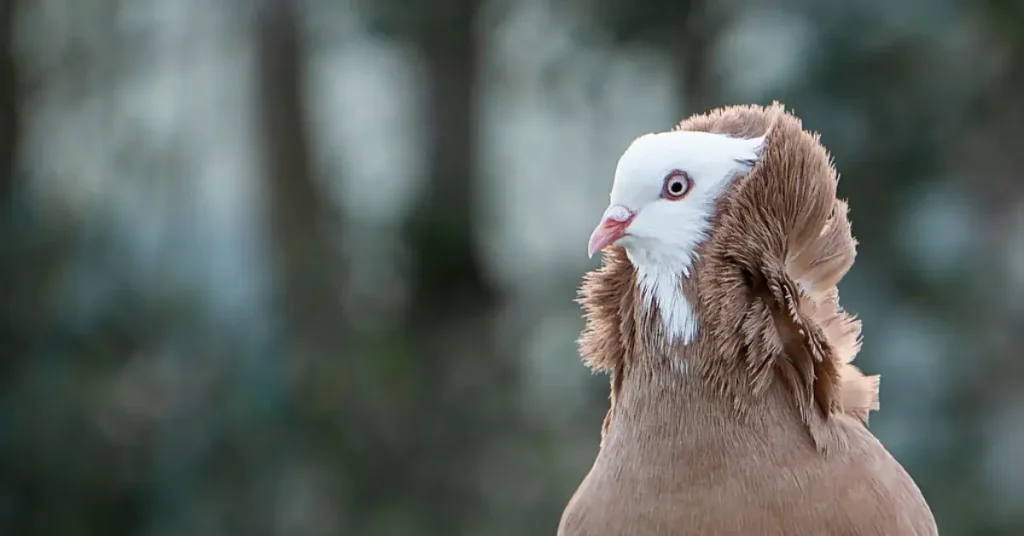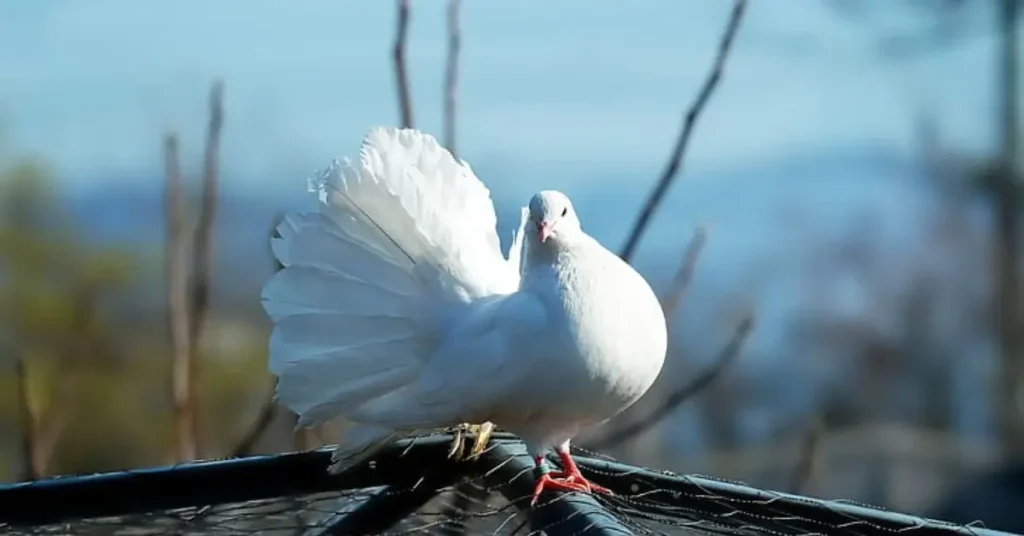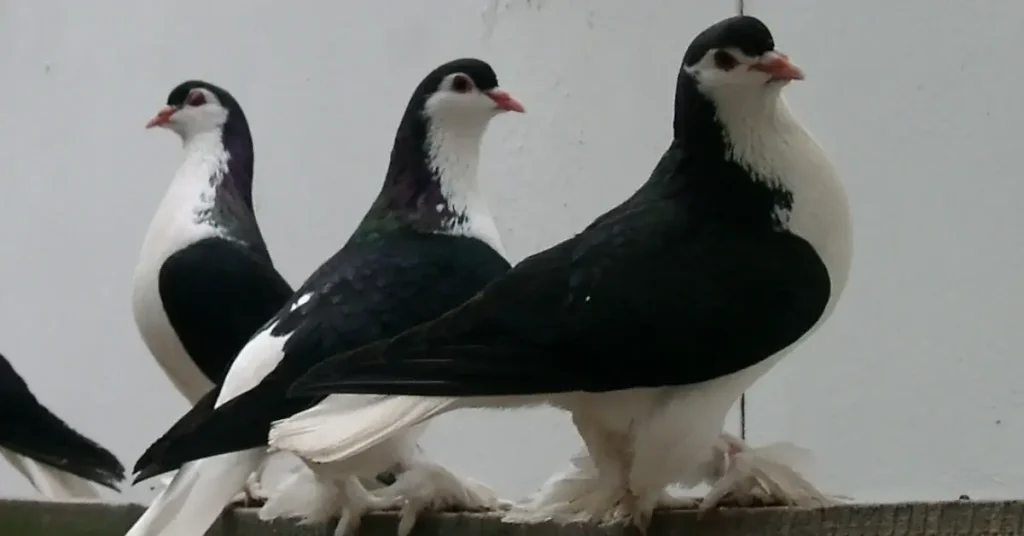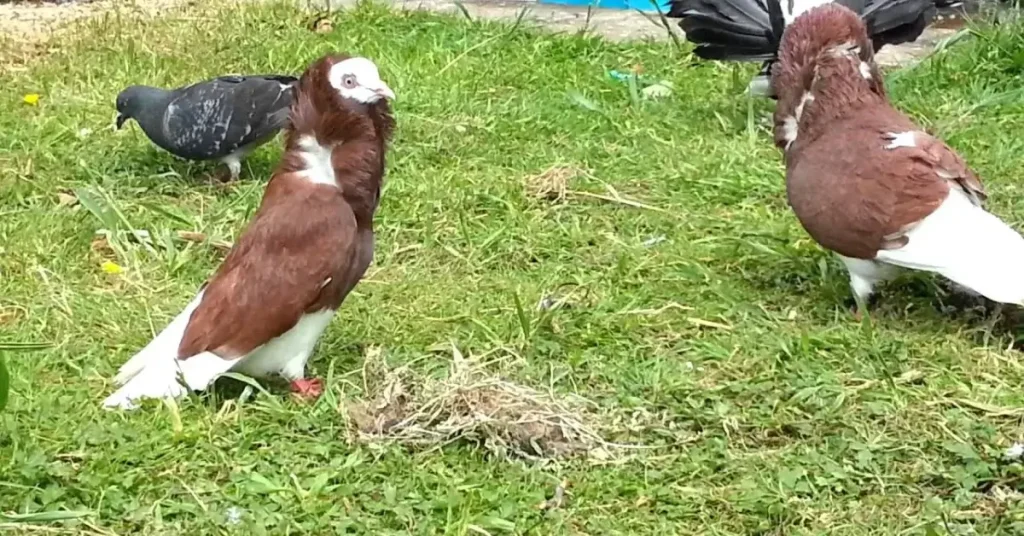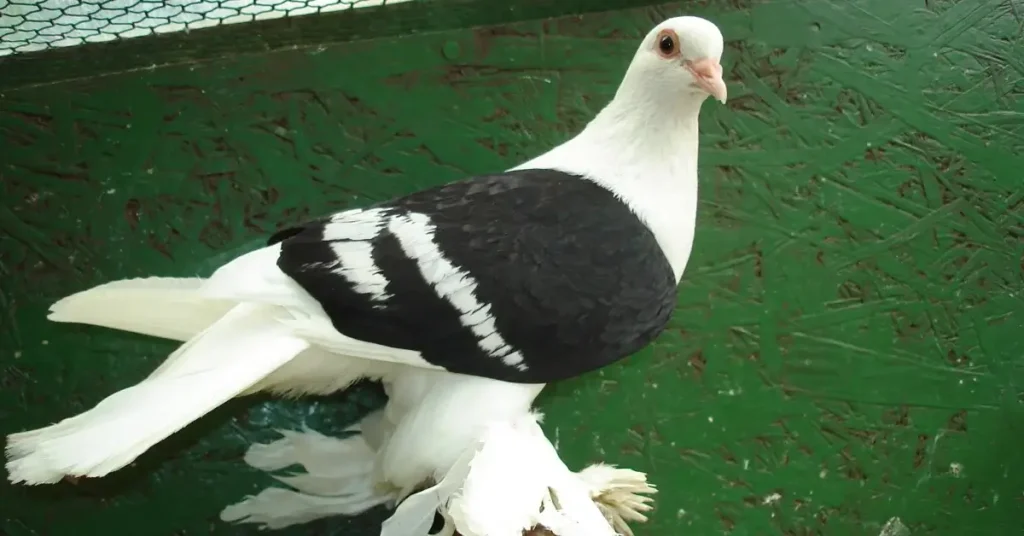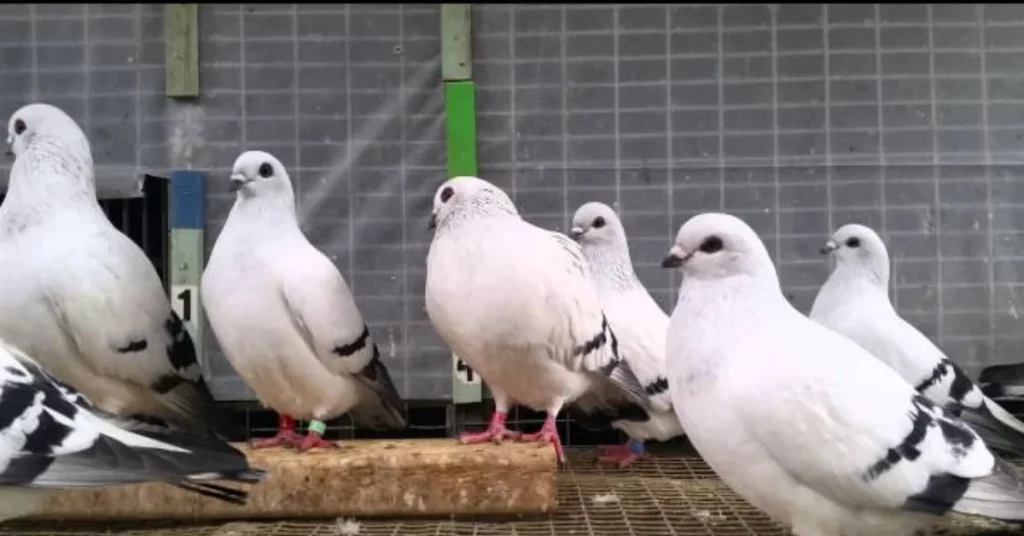Frillback Pigeon – The Fancy Feathered Marvel
The Frillback Pigeon is one of the most elegant and distinctive pigeon breeds in the world, celebrated for its beautifully curled feathers that create a soft, frilled texture across its wings and feet. Known for both its ornamental value and calm temperament, this breed has become a favorite among pigeon enthusiasts, hobbyists, and breeders worldwide.
Frillbacks are not only admired for their beauty but also for their gentle disposition, social nature, and adaptability, making them an excellent choice for both beginner and experienced pigeon keepers.
History and Origin
The exact origin of the Frillback Pigeon remains uncertain, but historians believe the breed originated in the Middle East or parts of Asia. It later gained recognition across Europe, especially among noble families who prized its ornate appearance.
Selective breeding over centuries has refined the Frillback’s signature curled feathers, making it one of the oldest and most admired ornamental pigeon breeds in existence. Today, it is recognized by major pigeon associations across Europe, North America, and Asia, where it frequently appears in bird shows and exhibitions.
Breed Characteristics
The Frillback’s unique physical traits make it instantly recognizable and highly sought after in aviculture.
- Size: Medium-sized, with a graceful and balanced frame
- Feathers: Distinctively curled on the wings and feet
- Head Type: Comes in two forms – shell-crested and plain-headed
- Colors: Available in white, black, red, yellow, blue, silver, and pied varieties
- Wings: Long and broad with a gentle, flowing curl pattern
Each Frillback pigeon is unique, with curl patterns and feather textures that vary slightly from bird to bird, giving every individual a special visual appeal.
Personality and Temperament
Frillback Pigeons are known for their calm, friendly, and social behavior. They enjoy companionship—both from humans and other pigeons—and are rarely aggressive. Their gentle temperament makes them suitable for family environments, community aviaries, and even educational farms.
They are curious and intelligent, often responding positively to gentle interaction and consistent care. While not as strong fliers as racing breeds, they enjoy short, graceful flights within enclosed aviaries.
Ideal Living Environment
Frillbacks thrive best in secure, clean, and dry living spaces. Because of their unique feathers, they should be housed in an environment that protects their plumage from dirt and moisture.
- Spacious lofts or aviaries with smooth, clean surfaces
- Proper ventilation and natural light exposure
- Dry nesting materials to preserve feather quality
- Protection from rain, wind, and predators
Since their feathers are more decorative than aerodynamic, Frillbacks are not well-suited for long-distance flight. They prefer comfortable perches and safe, enclosed spaces for daily activity.
Diet and Nutrition
A balanced diet supports the Frillback’s overall health and feather quality. Provide a mixture of grains, seeds, and supplements to ensure complete nutrition.
- Base diet: Premium pigeon grain or pellet mix
- Supplements: Fresh greens, grit, and calcium for digestion and eggshell strength
- Hydration: Clean water available at all times
- Occasional treats: Small amounts of peas, corn, or vitamins for energy and feather shine
Maintaining a consistent feeding routine helps build trust and supports their calm nature.
Health and Grooming
Due to their feather structure, Frillback Pigeons need regular but gentle grooming. Their feathers can trap dust and debris more easily than smooth-feathered breeds, so hygiene and maintenance are essential.
- Regular loft cleaning to avoid dirt buildup
- Occasional bathing or light misting to refresh feathers
- Inspection of feet and nails, especially around feathered toes
- Parasite prevention and periodic health checkups
With attentive care, Frillbacks can live between 10–15 years, offering long-term companionship and beauty.
Exhibition and Popularity
Frillbacks are highly valued in bird exhibitions and pigeon shows worldwide. Judges typically assess the breed based on several criteria:
- Quality and symmetry of feather curls
- Uniformity and cleanliness of plumage
- Head shape and eye clarity
- Color vibrancy and pattern consistency
Because of their striking appearance, Frillbacks are often the centerpiece of ornamental pigeon collections. Their popularity continues to grow among breeders seeking a combination of aesthetic value and manageable care requirements.
Compatibility and Social Behavior
Frillbacks are peaceful and get along well with other calm pigeon breeds. They adapt easily to shared aviaries and can thrive in small groups. With proper socialization, they become comfortable around humans and often respond well to hand feeding or gentle handling.
Their docile nature also makes them suitable for bird enthusiasts living in urban areas, as they are quiet and easy to maintain.
Fun Facts About Frillback Pigeons
- The curls on their feathers are a result of selective breeding, not environmental factors.
- Frillbacks are featured in historic pigeon art from Europe and the Middle East.
- They are among the most photographed fancy pigeons in the world due to their unique appearance.
- Each Frillback’s curl pattern is slightly different, giving every bird a one-of-a-kind look.
FAQs about Frillback Pigeons
Q1: Can Frillback Pigeons fly?
A: Yes, but only short distances. Their curled feathers limit their flying ability, making them better suited for enclosed aviaries.
Q2: Are Frillbacks easy to care for?
A: Absolutely. They are calm and friendly but require regular grooming to maintain their feather quality.
Q3: Do Frillbacks breed easily?
A: Yes, they breed well in captivity. However, providing soft nesting materials helps protect their feathers during incubation.
Q4: What colors do Frillback Pigeons come in?
A: Frillbacks are found in a wide range of colors, including white, black, red, yellow, blue, silver, and various pied patterns.
Q5: Are Frillback Pigeons noisy?
A: No, they are one of the quieter pigeon breeds, making them ideal for residential settings.
Conclusion
The Frillback Pigeon is a true masterpiece of nature and breeding, admired for its ornamental curls, peaceful personality, and gentle demeanor. It represents a perfect blend of art and aviculture, offering beauty and companionship to anyone who keeps it.
Whether you are a seasoned breeder or a new enthusiast exploring fancy pigeon breeds, the Frillback is an excellent choice — elegant, adaptable, and endlessly fascinating.
Read more

